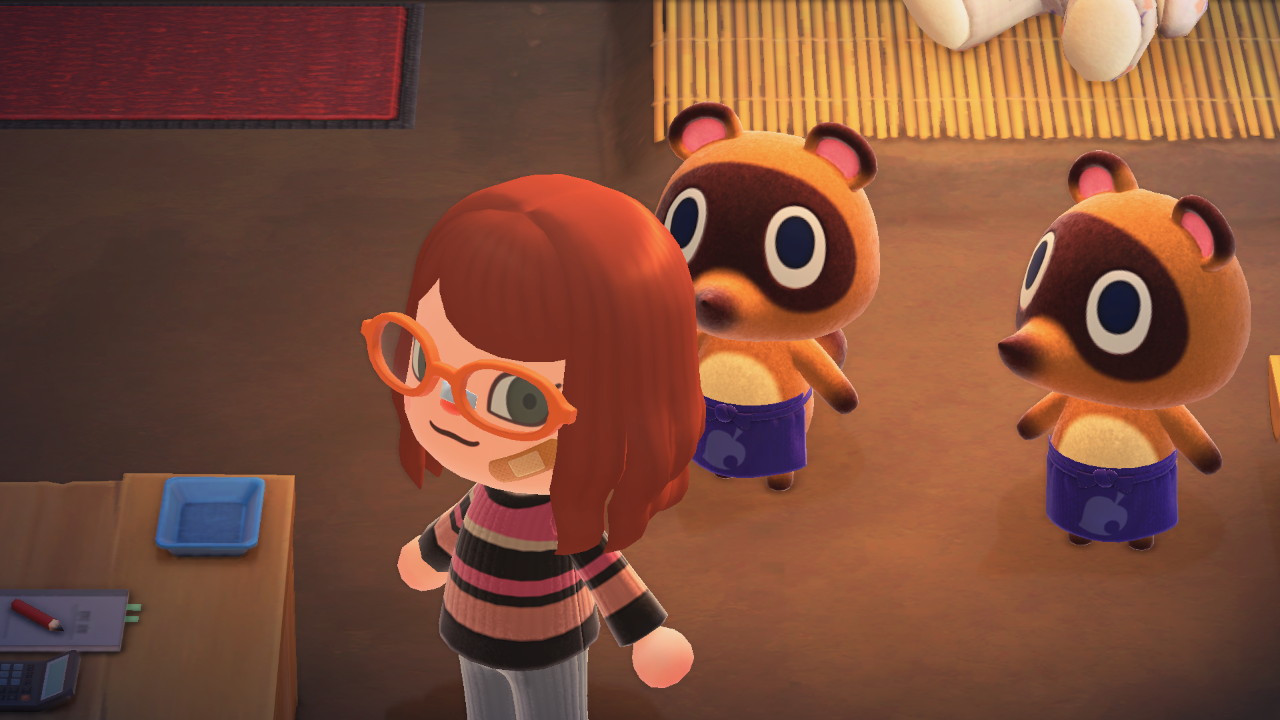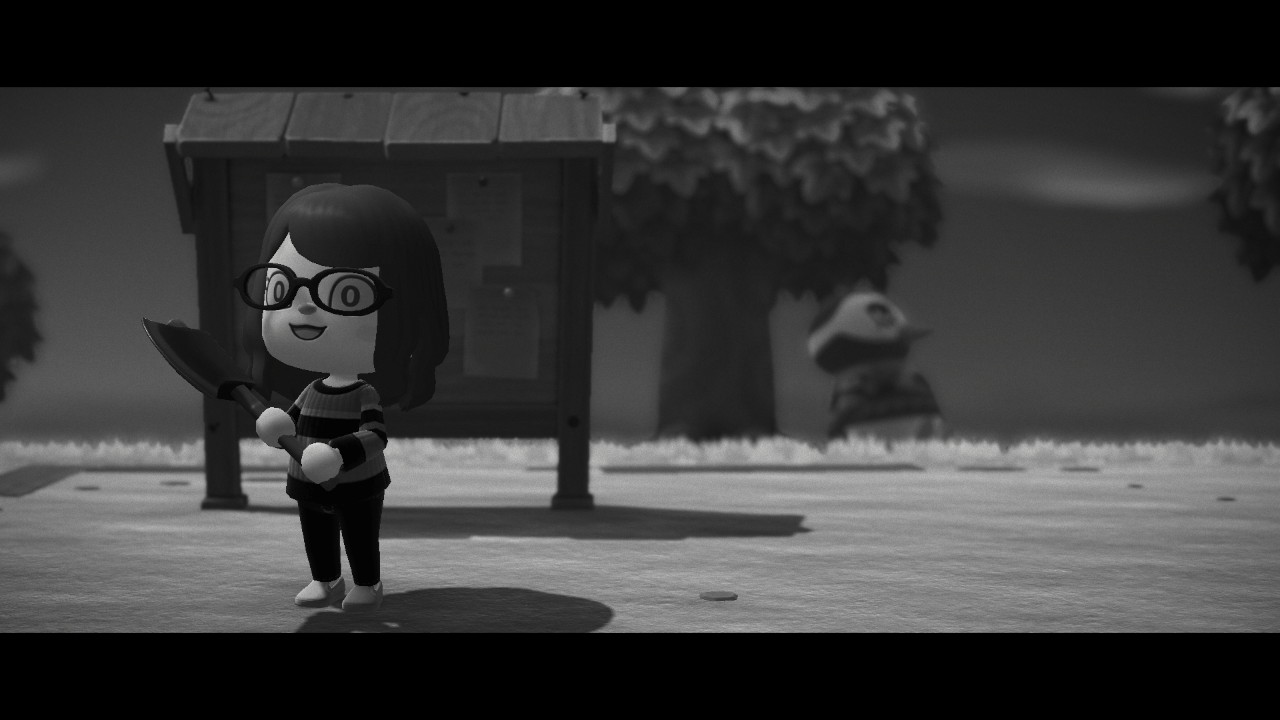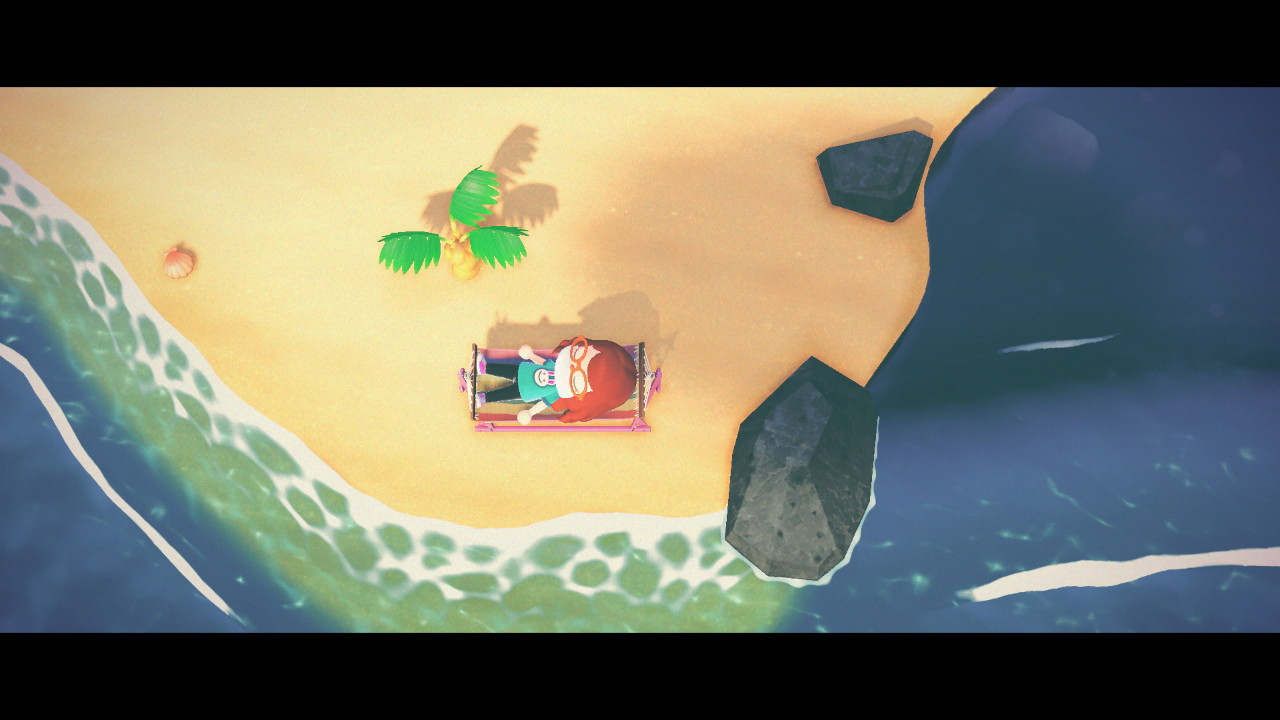In the world of modern game reviews, having just over two weeks to play and judge any one title can feel like a lifetime compared to the few days we often get.
And yet, when that game is Animal Crossing: New Horizons, the 15 days I’ve put into it seem like almost nothing. When I first started playing, I worried it’d be hard to form a proper opinion of this latest chapter of Nintendo’s social sim series by the time the review embargo was up. Now, I’m certain that I can’t.
Instead, my plan is to come back in a month (or so) to finalize this review once I’ve actually seen more of the big promised features and had some of my concerns assuaged (or not). So, for now, let’s have a more casual chat about how things have gone for me so far—and why I’m hopeful, yet a little frustrated, for how this latest Animal Crossing is looking in the long run.

Making the Switch
My first exposure to Animal Crossing came thanks to North America’s first experience with the series: 2002’s enhanced GameCube port of the original Japan-only N64 game Doubutsu no Mori. I’d come to Nintendo’s console late, and Animal Crossing was one of the few titles I’d end up really digging into on the system.
It was 2005’s Animal Crossing: Wild World on the Nintendo DS that shifted how I saw the franchise. Having my little village portable and playable anywhere became a big deal for me, and seven years later, Animal Crossing: New Leaf on 3DS cemented my belief that the series was better suited to handhelds.
Animal Crossing: New Horizons, however, has made me realize that I’ve missed having the option to run around my town and interact with my animal neighbors on a bigger screen. As many times as I’ve praised the Switch’s hybrid nature, I have to do so again here. Sometimes, I find myself wanting to just pick up my Switch, get comfortable somewhere, and jump in on its embedded screen. Other times, I want to have New Horizon big and beautiful on my television, especially when my twins are excited to sit with me and watch cartoon mama run around doing silly things. My heart still sees Animal Crossing as a handheld experience, but it’s also a console game at the same time—and no longer having to make a hard choice between those two playstyles has markedly increased my enjoyment with the game.
Filling the potholes
What else has improved my time with Animal Crossing: New Horizons is the obvious amount of work Nintendo has put into a host of quality-of-life improvements both big and small. And, let’s be honest: Some of these are things the series has desperately needed for years.
A perfect example of this comes from an anecdote born out of sheer frustration. A few days into playing, I hit a rock with my shovel, and a bug jumped out. Desperate to catch it, I began mashing the right directional button to cycle through my tools, because I figured that would be quicker than bringing up my inventory and locating my net amongst all the junk I was carrying. Before I could fumble through everything I had on me, though, the bug was gone.
I was furious that Nintendo still hadn’t given us a pop-up radial menu for selecting tools, which would be the most no-brainer thing it could have done in 2020. And then, literally five minutes later, I unlocked one.
A shockingly modern way to select your current tool in New Horizons isn’t the only sign that the dev team was willing to get rid of some of the out-of-date ideas that have been junking up the Animal Crossing series. You know the excitement over finding out we were getting a whopping four additional slots to our personal inventories? It can be expanded beyond that. Now, when you’ve found the daily money rock, the Bells it drops automatically go into your money pool, not your pockets. Your house as a whole now offers a decent amount of storage without needing any specific furniture in it, though items like dressers and mirrors do provide other benefits (such as the really slick new clothing and accessories interface). Oh, and remember how you had 10 mailbox slots in New Leaf? Now you have 300.
Part of what has made me so hesitant to even consider reviewing New Horizons at this point is that a number of those solutions to long-standing complaints weren’t evident right away. Who’s to say that the game won’t go on to address some of my other pet peeves in the near future as well? Now, I want to be clear: I don’t have faith that Nintendo will have totally scrubbed the game of the needless annoyances that have long plagued the series. For example, why do tools still use up inventory space? Sure, it’s less of an issue now that we’re given more room in our pockets, but there’s just no player-focused reason to keep with that tradition—especially now that you’ll need more room for collecting crafting materials. Still, I appreciate the changes that have come, and remain hopeful that more are waiting.

Creating a better future
Speaking of materials, I can’t talk about Animal Crossing: New Horizons without getting into its new crafting system. Being able to learn new recipes and then create a wide assortment of items just feels so natural to the Animal Crossing experience, legitimately amplifying the fun of not only decking out your own personal house, but also the entire island. It’s hard to believe that we’re only now getting a crafting system in a proper Animal Crossing game after 18 years, and I really hope it expands even more in the future to things like cooking. (Unless that also awaits me later in the game?)
There’s still joy in that neat new item popping up for sale or getting it as a gift from a neighbor, but there’s an equally satisfying sense of pride in filling your home with things made by your own virtual hands. Even better, the ability to customize items has been expanded, with more patterns to choose from for fabrics, wood types for furniture, and so on. Crafting legitimately is one of the best new features in New Horizons, and is one of the biggest shifts the franchise has felt in years—but it doeshave a bit of a downside.
Six years ago, I wrote this while reviewing Harvest Moon: The Lost Valley:
“Cooking is an activity you’ll regularly take part in, but you can’t directly access any of the produce that’s stored in your refrigerator while doing so (even when it sits directly next to your kitchen unit). All of it has to be in your backpack in order to be usable—a real inconvenience, given how often you’ll hit the limit of what you can carry due to the array of seeds, minerals, tools, harvested crops, and other items you’ll be lugging around.”
Even at that point in time, The Lost Valley felt out of date by having a crafting system where you couldn’t use the needed materials directly from your main storage. Here we are, six years later, and the same issue plagues New Horizons. Right from the beginning, the game throws a lot of materials at you, with sticks, rocks, clay, iron, weeds, and three different types of wood all necessary for even the earliest of recipes.
And yet, while any clothing items you put into your home’s storage are then directly accessible from clothing-related furniture, none of your crafting materials gain that ability, even if you’ve got a crafting bench right there in your house. You’ll have far too much to pick up or carry around to constantly have all of those materials on hand at all times, so crafting becomes a game of checking the recipe for what you want to make, swapping in materials, building it, swapping out materials, and repeating. I’m really hopeful that, like the radial tool menu, I’ll get the option in the coming days to unlock either a better method for accessing materials or some sort of special furniture which can feed them to the work bench. If that isn’t the case, then it’s maddening that developers still get this wrong.
Making the island your own
With that out of my system, I want to move on to the other biggest advancement Animal Crossing: New Horizons offers: a deeper sense of player agency.
Now, the Animal Crossing series has always been about letting us have a lot of say over the towns our avatars move to, but the improvements made to that sense of choice here make an incredible impact. Going into the game, the idea of finally being able to place items outside our homes sounded like a great addition; in practice, it completely changed the way I approached my village both mentally and emotionally. I’ve yet to unlock the ability to create paths, reshape rivers, or modify cliffs, but even just being able to decorate the area surrounding my home feels like a gigantic step forward in itself. Returning to New Leaf to remind myself of various elements, it was pretty surprising how barren and lifeless that game now feels in comparison. Like with crafting, I’m now not sure I could ever go back to a world where we didn’t have this option.
Oh, and thank the lord for New Horizons’ character creator. I’m sure you’ve all heard the basics by now, like how we can finally pick our skin color after years of begging for the ability, and how all of the standard features for things like hairstyles are available right from the start (other than the additional styles you can purchase later). The fact that I can then go back and change anythingabout my avatar at any time—and for free no less—just seems so anti-Nintendo. Do you know how wonderful it is to decide I want to freshen up my hairstyle and color, and be able to do so without needing both Bells and a damned FAQ like I did in New Leaf? It’s very wonderful!

The beauty of island life
It’s easy—and also correct—to prop up gameplay changes as the big advancements New Horizons offers over its predecessors. However, all of those things wouldn’t then be complete without its audio and visual presentation. I still hold a certain fondness for the Nintendo 3DS, and for its time, Animal Crossing: New Leaf was all I needed. Looking back at it now, it’s hard to accept just how much outdated hardware held back the game, and how easily New Horizons completely blows it away.
The thing, though, isn’t just that New Horizons is prettier, or flashier, or pushing tens of thousands more polygons. It’s the work that’s gone into the game by the team into presenting Animal Crossing in a way we’ve never seen before. One of the moments that hit me the most was a surprisingly small one: when I booted the game up one day to find a spring storm hitting the island. As the winds howled, and the trees shook and swayed, it gave the game a sense of life that I’m not sure it’s ever had before. There’s other smaller examples you’ll notice, like the rich skin textures your animal pals now sport, or bigger ones like the new museum, which is almost shocking to see the first time you wander its halls.
The elephant in the village
So far, I’ve had an enjoyable time with Animal Crossing: New Horizons. Going back to the series through a chapter that sports some legitimate improvements and can’t-live-without additions has helped rekindle my feelings for the franchise. There are definitely some parts I’m still hesitant about—including Nook Miles, the new point-rewarding quest system which are worrying me a tad in how much they shift my priorities when playing—but I remain hopeful that more of those complaints will see a resolution of some fashion the further I go.
There does, however, then loom a large dark cloud over all that positivity.
Sitting here with my both a regular Nintendo Switch and a Switch Lite, I can’t play New Horizons on both of those systems. Well, okay, I can—but not if I actually want to play as my character on my island. Because I initially started on the Switch, that’s where my village now exists, and there’s nothing I can do to move it over to the Lite. Cloud saves, one of the few real features I get from Nintendo’s paid online service, simply don’t work here, either for moving my save file back and forth, or even for protecting it from deletion. (Yes, I know that Nintendo is offering some side recovery service, one that may only work once or may work numerous times if the company ends up changing its mind. Can we talk about how ridiculous it is to have a second solution for a problem when a first solution already exists?)
There are two main arguments for why this restriction is in place. The first is that, since up to eight people can live on the same island together on the same Switch, it gets messy trying to figure out how to keep the island consistent across multiple systems. I totally get that—except for all of us out here who won’t be in that situation. With my wife uninterested in most games that aren’t Dr. Mario or Chrono Trigger, and my children not yet old enough to play games themselves, I’m the only one from my household who will be living the island life. Why, then, punish people like me? Being able to play across both my Switch and Switch Lite is far more important to me than a feature I’ll never use, but I get no choice or say in the matter.
The other explanation that keeps getting thrown around is that Nintendo’s strictness over save files is to prevent cheating. To that, I say this: Who cares if I cheat? If we were talking about a title like Splatoon 2, where cheating can directly damage a game’s competitive online component, I fully support working to block such problems. Animal Crossing, however, is a single player-focused experience where Nintendo loses no money if you find sneaky ways to unlock content. Really, the biggest potential threat to its multiplayer component would be my friends ending up with cool new stuff they wouldn’t have otherwise. Concern over my time with New Horizons being “ruined” is annoying, especially since I’m not the kind of player to use save file exploints for the most part anyhow—but I am the type who fumes over the features I lose due to such needless panic.

We’ll meet again soon
This isn’t the first time I’ve found Nintendo’s requirements to play its games the way it wants me to play them exhausting, and it certainly won’t be the last.
Once I let myself get away from the business decisions and back to the game itself, Animal Crossing: New Horizons is easily one of the most exciting chapters of the franchise I’ve played due to its overall potential. As much as I’ve enjoyed previous titles like Wild World or New Leaf, much of what they brought was either natural evolution, underdeveloped concepts, or more gimmicky additions. New Horizons, however, feels like a genuine step forward, thanks to its mix of improvements for older elements and new core gameplay ideas that could change the series forever.
After I’ve had more time with the game, gotten a proper look at the rest of its key new features, and better solidified my opinion on various factors I’m still on the fence about, I’ll be back with final thoughts and a proper score. For now, Animal Crossing: New Horizons feels like a no-brainer for fans of the franchise, and a perfect place to start for newcomers—with the exception of ruining every other previous Animal Crossing game, should you ever want to go back to them.

Mollie got her start in games media via the crazy world of gaming fanzines, and now works at EGM with the goal of covering all of the weird Japanese and niche releases that nobody else on staff cares about. She’s active in the gaming community on a personal level, and an outspoken voice on topics such as equality in gaming, consumer rights, and good UI. Check her out on Bluesky and Mastodon.